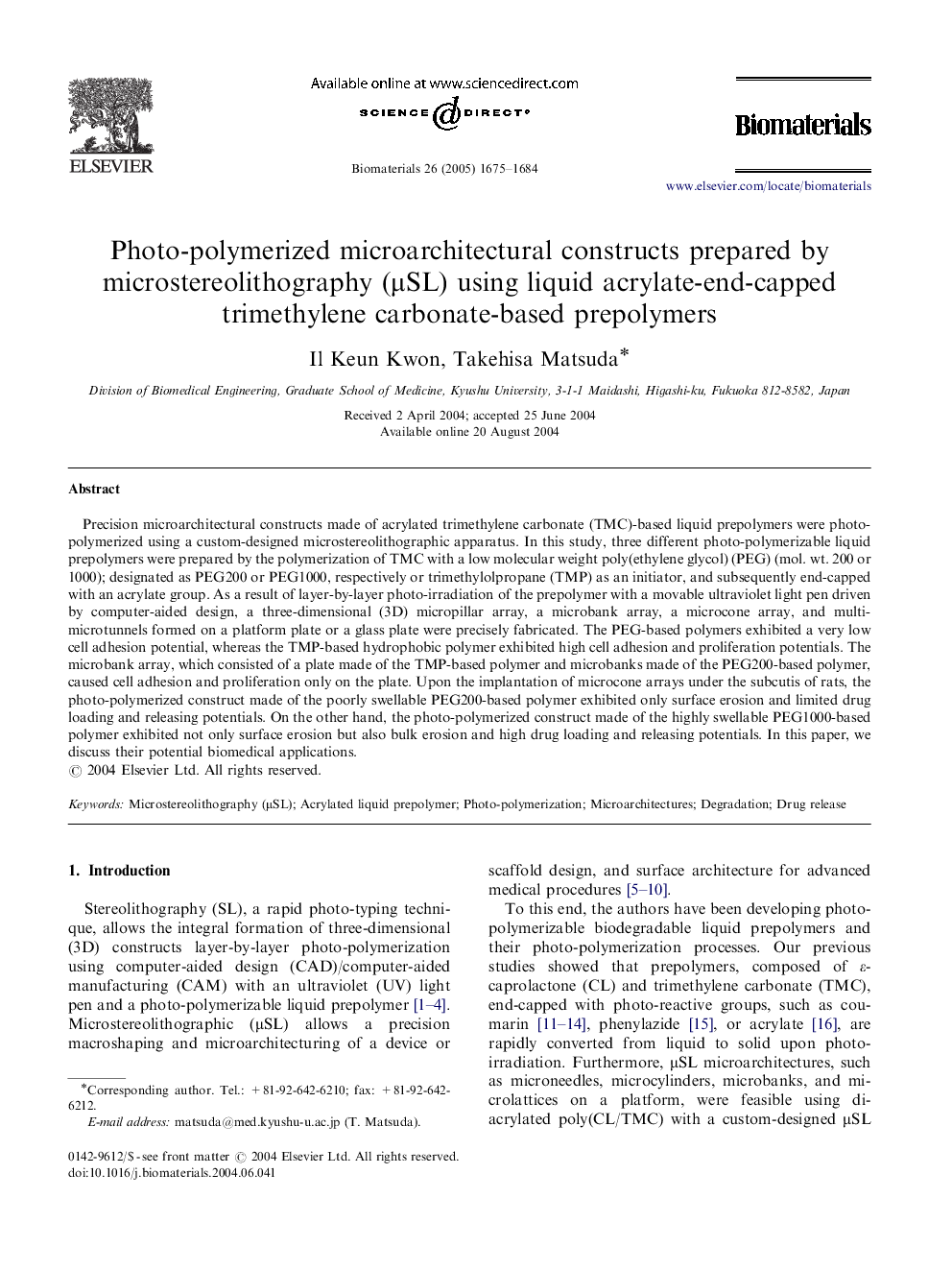| Article ID | Journal | Published Year | Pages | File Type |
|---|---|---|---|---|
| 12359 | Biomaterials | 2005 | 10 Pages |
Precision microarchitectural constructs made of acrylated trimethylene carbonate (TMC)-based liquid prepolymers were photo-polymerized using a custom-designed microstereolithographic apparatus. In this study, three different photo-polymerizable liquid prepolymers were prepared by the polymerization of TMC with a low molecular weight poly(ethylene glycol) (PEG) (mol. wt. 200 or 1000); designated as PEG200 or PEG1000, respectively or trimethylolpropane (TMP) as an initiator, and subsequently end-capped with an acrylate group. As a result of layer-by-layer photo-irradiation of the prepolymer with a movable ultraviolet light pen driven by computer-aided design, a three-dimensional (3D) micropillar array, a microbank array, a microcone array, and multi-microtunnels formed on a platform plate or a glass plate were precisely fabricated. The PEG-based polymers exhibited a very low cell adhesion potential, whereas the TMP-based hydrophobic polymer exhibited high cell adhesion and proliferation potentials. The microbank array, which consisted of a plate made of the TMP-based polymer and microbanks made of the PEG200-based polymer, caused cell adhesion and proliferation only on the plate. Upon the implantation of microcone arrays under the subcutis of rats, the photo-polymerized construct made of the poorly swellable PEG200-based polymer exhibited only surface erosion and limited drug loading and releasing potentials. On the other hand, the photo-polymerized construct made of the highly swellable PEG1000-based polymer exhibited not only surface erosion but also bulk erosion and high drug loading and releasing potentials. In this paper, we discuss their potential biomedical applications.
